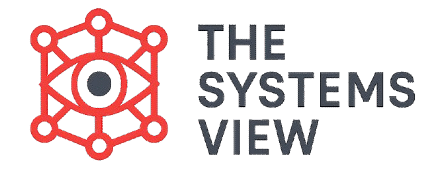If you want to understand why a society resists new ideas or why tradition can be so hard to change, you need to understand culture as a system. This was the insight of Margaret Mead (1901–1978), one of the most famous cultural anthropologists of the 20th century.
Mead was a tireless researcher who studied human development, behavior, and custom across many different societies. Crucially, she was a core participant in the Macy Conferences on Cybernetics alongside her colleagues, Wiener and Bateson. Her role was essential: she translated the highly technical rules of Cybernetics—rules about control and feedback—and applied them to the messy, unpredictable world of human culture and social change.
Her work proves that every society, every community, and every family uses feedback loops to maintain its own stability and identity.
Culture as a Homeostatic System
Margaret Mead’s main contribution to Systems Thinking was showing that a human culture operates as a self-regulating system. This idea draws directly from the concept of homeostasis found in Cybernetics.
The Goal of Cultural Stability
Mead showed that every culture has strong built-in mechanisms designed to maintain its own form and stability.
- Custom and Tradition: These are forms of negative feedback (balancing loops). When a new idea or behavior appears that goes against the norm, the culture reacts with disapproval, social pressure, or punishment. This feedback corrects the behavior and pushes the system back toward its familiar, stable state.
- Equilibrium: This constant self-correction means that cultures are always seeking a state of equilibrium. Change is possible, but it is often slow and fiercely resisted by the system’s powerful internal controls.
Mead used this systemic perspective to explain why efforts to change a culture quickly (like introducing a new technology or political system) often fail. The culture’s built-in balancing loops are simply too powerful.
The Systemic Nature of Cultural Learning
In her later, highly influential work, Mead focused on how the flow of information—or learning—changes across generations. She viewed this flow of knowledge as a core systemic variable that determines a society’s future.
The Direction of Information Flow
Mead identified three main types of culture based on where the information and learning primarily flow:
Post-Figurative Culture
In this type of culture, the main flow of information is from the past to the future.
- Structure: Children primarily learn from their elders, and traditions are dominant and fixed.
- Systemic View: This system is highly stable and resistant to external change because the rules are clear and the learning loop is always reinforcing the past.
Co-Figurative Culture
In this culture, the main flow of information is peer to peer.
- Structure: Both children and adults learn mostly from their contemporaries—other peers in their generation.
- Systemic View: This system arises in times of rapid social change, like immigration or war, where the traditions of the elders no longer fully apply. The culture becomes more dynamic, with less control exerted by the past.
Pre-Figurative Culture
This is the type of culture Mead believed the modern world was rapidly moving toward. Here, the flow of information is from the future back to the past.
- Structure: Elders and parents must learn from their children, especially about technology and rapidly changing social realities.
- Systemic View: This is a highly unstable system because the established balancing loops (traditions) no longer work. Change and uncertainty become the norm.
Mead’s Legacy: Bridging Science and Society
Mead’s work was crucial because she showed that the complex, messy world of human relationships could be analyzed using the precise, logical language of Cybernetics. She helped demonstrate that the principles of control, communication, and feedback were universal.
Important: Margaret Mead’s core contribution was using Cybernetics to prove that culture is not a random collection of habits. Culture is a self-regulating system that constantly uses feedback—in the form of social approval and disapproval—to maintain its own survival and identity.
Conclusion
Margaret Mead was a pivotal thinker who successfully brought Systems Thinking out of the machine laboratory and into the human community. By identifying the systemic forces that govern tradition, stability, and generational learning, she provided a clear framework for understanding why culture resists change. Her concepts remain essential for anyone who seeks to understand how societies are organized and how complex, human systems adapt—or fail to adapt—to a rapidly changing world.



